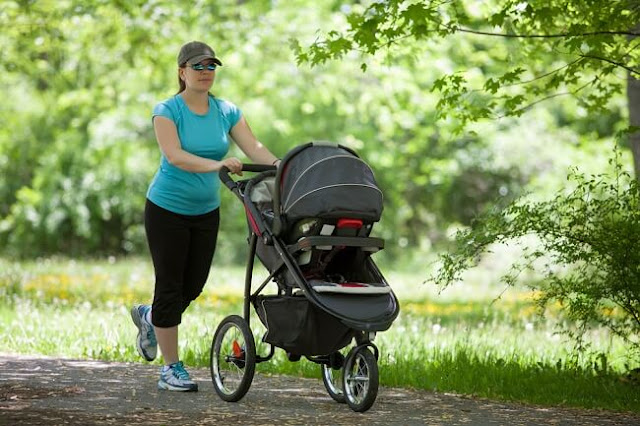Some mothers want to lose weight immediately by exercising after giving birth. It turns out that it is not entirely wrong. According to research, new mothers who immediately return to exercise after giving birth will be fitter faster. Even exercise can help reduce the risk of depression after giving birth.
Generally exercise is recommended about six weeks after giving birth. However, there is a possibility that Mother needs to wait longer. It is recommended to consult a doctor to find out when you can start exercising.
Simple Sports at Home
Sports that need to be done Mother after giving birth does not need a long time. You only need to spend about 10 minutes. Mothers can benefit from this activity, especially if it's done routinely. Here are some types of exercises that can be selected:On foot
Walking is the easiest sport to do to get back in shape after labor. Start with a leisurely stroll, while carrying the baby in a sling or in a stroller. Then, Mother can try to walk faster and be powerful. In addition, Mother can also entrust your little one to try other variations, such as walking zigzag or walking backward to train balance.
Want to be more challenging? Try to go through the track to a hill or mountain that has a safe track. Mother and Father can take turns carrying Little One in a sturdy sling, in front or behind.
Abdominal breathing exercises
This exercise can be done even without leaving the bed, you know. Starting from sitting up straight, take a deep breath. Contract the abdomen when inhaling, hold for a moment, and relax again when exhaling. Try to hold your breath longer, after several breathing exercises. In addition to relaxing the muscles, this exercise also helps start tightening the abdominal muscles, you know, Bun.
Lie down while raising your head
Lie with both arms on either side of the body. Bend your feet with your feet flat on the floor. Inhale and relax the stomach. Exhale while raising your head and neck. Then inhale as you lower it back. After 10 times, try to raise both hands at a 45 degree angle forward. Repeat up to 10 times also with similar breathing techniques. This exercise can help tighten your abdominal muscles.
Kegel exercises
Kegel exercises are actually simple exercises that you can try on the toilet, you know. When urinating, control the muscles so that the flow of urine stops, then release again. Now, after knowing how, Mother can do this movement at other times, such as while sitting watching TV. Try to do it 3 times a day, 10 times each.
This exercise serves to tighten the urinary muscles and help reduce the risk of constipation.
Squat with Little One
Mother can also invite Little to join the practice. For example, do squat movements by holding the baby in front of the chest. Open both feet shoulder width apart, bend your knees until your back forms a 45 degree angle. Lower your body while slowly lowering your baby until his feet touch the floor. Repeat several times.

Komentar
Posting Komentar